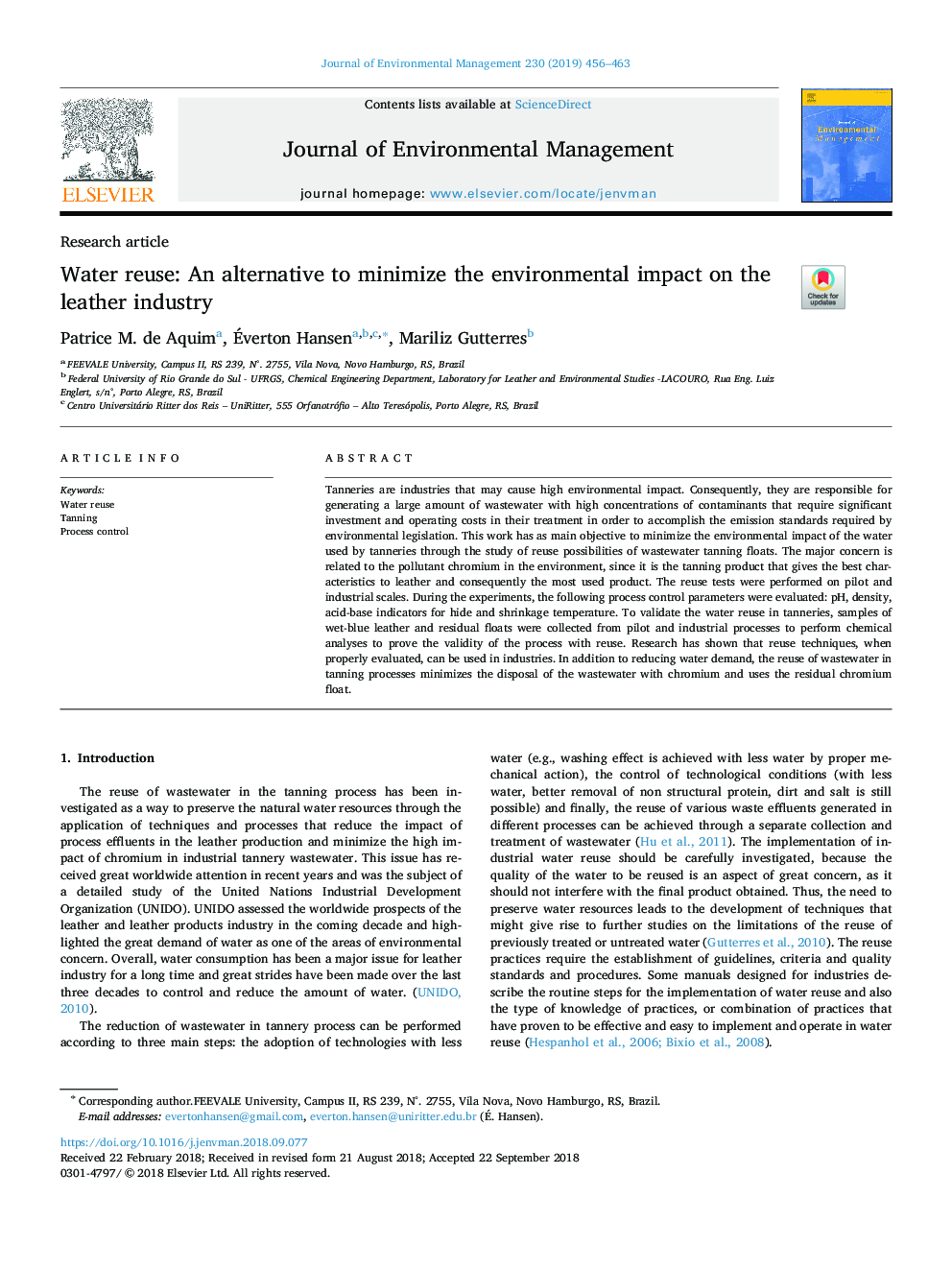| Article ID | Journal | Published Year | Pages | File Type |
|---|---|---|---|---|
| 11023268 | Journal of Environmental Management | 2019 | 8 Pages |
Abstract
Tanneries are industries that may cause high environmental impact. Consequently, they are responsible for generating a large amount of wastewater with high concentrations of contaminants that require significant investment and operating costs in their treatment in order to accomplish the emission standards required by environmental legislation. This work has as main objective to minimize the environmental impact of the water used by tanneries through the study of reuse possibilities of wastewater tanning floats. The major concern is related to the pollutant chromium in the environment, since it is the tanning product that gives the best characteristics to leather and consequently the most used product. The reuse tests were performed on pilot and industrial scales. During the experiments, the following process control parameters were evaluated: pH, density, acid-base indicators for hide and shrinkage temperature. To validate the water reuse in tanneries, samples of wet-blue leather and residual floats were collected from pilot and industrial processes to perform chemical analyses to prove the validity of the process with reuse. Research has shown that reuse techniques, when properly evaluated, can be used in industries. In addition to reducing water demand, the reuse of wastewater in tanning processes minimizes the disposal of the wastewater with chromium and uses the residual chromium float.
Keywords
Related Topics
Physical Sciences and Engineering
Energy
Renewable Energy, Sustainability and the Environment
Authors
Patrice M. de Aquim, Ãverton Hansen, Mariliz Gutterres,
